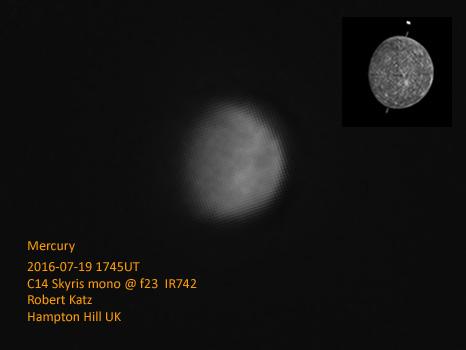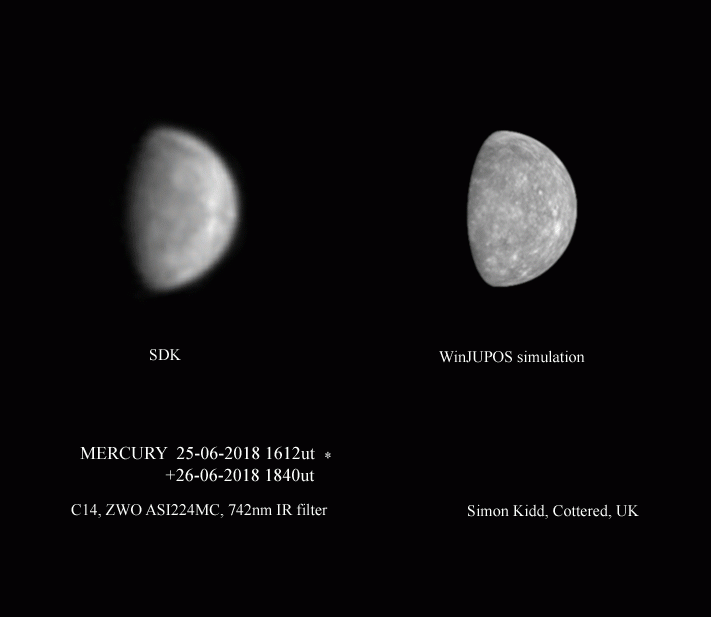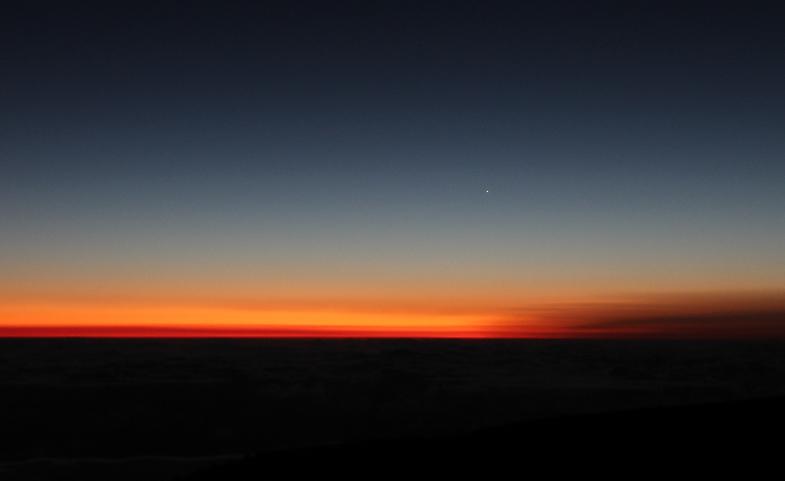2019 February 23
Observer’s Challenge – Mercury at greatest eastern elongation


The orbit of planet Mercury’s lies closer to the Sun than the Earth is, meaning that it always appears close to the Sun and is very difficult to observe much of the time.
It is observable for a few days each time it reaches greatest separation from the Sun – moments referred to as greatest elongation. Venus exhibits this phenomenon too.
These apparitions take place alternately in the morning and evening skies, depending whether Mercury lies to the west of the Sun or to the east.
When Mercury lies to the east of the Sun, it rises shortly after the Sun (but is not visible to the naked eye during day light) and sets a short time after the Sun; it is easily visible in early evening twilight. When it lies to the west of the Sun, it rises before the Sun and sets a short time before the Sun and is only visible to the naked eye shortly before sunrise in the morning.
Even though Mercury orbits the Sun once every 88 days, Mercury reaches eastern and western elongation in a seemingly irregular frequency every 40-70 days due to the Earth also rotating around the Sun and also because Mercury has one of the most eccentric orbits around the Sun of all the planets. At its closest it is 46,000,000 km away from the Sun (perihelion) and nearly 70,000,000 km at aphelion. At greatest elongation Mercury can be seen to lie between 18 to 28 degrees away from the Sun; in contrast Venus lies 45 degree to 47 degrees from the Sun at its greatest elongation.

Observing and imaging Mercury is challenging, though probably easiest when it is at its greatest elongation from the Sun. Advice on imaging Mercury has previously been published and readers are encouraged to submit these to both the Mercury and Venus Section Director, Richard McKim, and also to their BAA member page.
Dr McKim is particularly interested in the lowest phase observers can record. Dr McKim’s last ten year Mercury report published in 2017 mentions this aspect of the work and gives examples of narrow phases recorded by imaging work. The brightness of the planet falls off rapidly with reduced phase, due to the high surface toughness, and the planet then runs into daylight too, making it much harder to see a crescent Mercury than a crescent Venus or a crescent moon.

More information about Mercury can be found in the BAA Handbook, in the BAA Observing calendar and on in-the-sky.org. Observations of Mercury can also be seen on the BAA member pages.
[Thumb nail image: Mercury, 26/06/2018; Ron Palgrave, Stanley, North East England]
| The British Astronomical Association supports amateur astronomers around the UK and the rest of the world. Find out more about the BAA or join us. |
